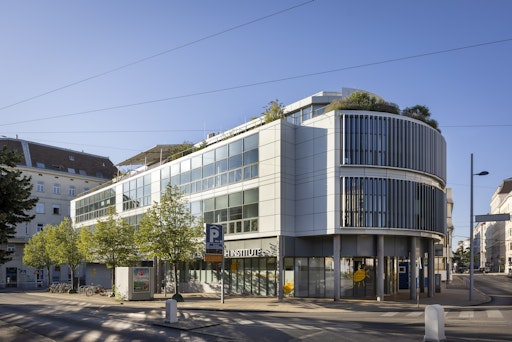When landmarks shine in gold worldwide, it is a visible sign of solidarity and empathy: Every year around 400,000 children and adolescents develop cancer worldwide-around 300-350 in Austria. The Childhood Cancer Awareness Month, which is celebrated annually in September, draws attention to the special challenges of children with cancer and their families.
Child cancer is a rare but serious disease. The diagnosis often makes families completely unprepared. In contrast to adults, in which external risk factors play a major role, the causes in children are often in spontaneous genetic or epigenetic changes. “These mutations usually arise spontaneously, with no recognizable cause and make many childish cancer particularly aggressive,” explains Ass.-Prof. Dr. Eleni Tomazou, scientific interim co-director of St. Anna Children’s Cancer Research.
“We are researching children affected and developing better therapies and specialized diagnostics together,” said Dr. Sabine Taschner-Mandl, scientific interim co-director of St. Anna Children’s Cancer Research. September is therefore an important signal, the two scientists agree: Because research is working intensively to understand the genetic and molecular foundations of child cancer and to develop targeted therapies that start directly at the source, namely the genetic errors that trigger the uncontrolled cell growth.
International movement with Austrian participation
The Childhood Cancer Awareness Month was initiated by affected parents in the United States in the 1990s and quickly developed into a worldwide movement. Since then, thanks to the support of international organizations such as Childhood Cancer International and the World Health Organization (WHO), the topic of child cancer has been put on the center of public attention. In the United States, September in 2012 was even officially declared the National Childhood Cancer Awareness Month. This was an important milestone to increase national attention and promote research into child cancer.
The Awareness Month is also firmly established in Austria. During this period, institutions such as donation -based St. Anna Children’s Cancer Research provide information about the illness and motivate you to become active and donate yourself. Because: Despite considerable progress, there are still major challenges:
-
Cancer: The origin of many types of cancer is still not fully clarified
-
Long -term consequences: Many children survive their cancer, but suffer from late consequences
-
Missing specific therapies: In particular, rare and particularly aggressive types of cancer need targeted research and therapies tailored to children.
Research as a hopeful
Thanks to decades of efforts, the five-year survival rate for child cancer in Austria is now more than 80 percent. With certain types of cancer, the chances are even higher. This is made possible primarily through the close interlinking of research and clinical care – a bridge that is lived at St. Anna Children’s Cancer Research and the St. Anna Children’s Hospital in Vienna. Here the immediate care of young patients combines with internationally recognized research on the emergence, diagnosis and treatment of child cancer. But as long as a child dies of cancer, there is a lot to do.
“September is more than a month on the calendar,” emphasizes Univ.-Prof. GDR. Caroline Hutter, head of the St. Anna children’s cancer research and medical director of the St. Anna Children’s Hospital. “He is a call to act, because every child deserves the chance of healing.”
About St. Anna Children’s Cancer Research
St. Anna Children’s Cancer Research (St. Anna Children’s Cancer Research Institute, CCRI) is an international and interdisciplinary research facility that aims to further develop and improve diagnostic, prognostic and therapeutic strategies for the treatment of children and adolescents with cancer. With the inclusion of the specific features of childish tumor diseases, committed research groups work in the areas of tumorgomatic and epigenomics, immunology, molecular biology, cell biology, bioinformatics and clinical research together to reconcile the latest scientific and experimental knowledge with the clinical needs of the doctors and the well -being of young patients improve. www.ccri.at www.kinderkrebsforschung.at
